Introduction to Digital Marketing
Digital Marketing is the component of marketing that uses the internet and online technologies such as mobiles, laptops, tablets and other digital devices.
What is Digital Marketing?
In brief, digital marketing promotes and sells products and services through the Internet.
Digital marketing involves many of the same principles as traditional marketing and is often considered an additional way for companies to approach consumers and understand their behaviour.
As digital platforms became increasingly incorporated into marketing plans and everyday life, and as people increasingly used digital devices instead of visiting physical shops, online marketing campaigns have become prevalent, employing combinations of search engine optimization (SEO), search engine marketing (SEM), content marketing, influencer marketing, content automation, campaign marketing, data-driven marketing, and optical disks and games have become commonplace.
Digital marketing extends to non-Internet channels that provide digital media, such as television, mobile phones (SMS and MMS), callbacks, and on-hold mobile ringtones.
·The extension to non-Internet channels differentiates digital marketing from online marketing.
FOCUS POINTS:
1. Digital Marketing primarily focuses on the PRODUCT, PRICE, PLACE AND PROMOTION of the company, which are also the four P’s of Online Marketing.
2. Digital marketing can also be understood through traditional marketing methods like magazine ads, billboards, and direct mail.
3. if a marketing campaign involves digital communication, it’s Online marketing.
Digital marketing considers how individual tools or digital channels convert prospects.
Types of Digital Marketing—
There are many types of digital marketing which are studied today and are known to us, which are elaborated on below-;
- Search Engine Optimization(SEO)
- Search Engine Marketing (SEM)
- Social Media in Marketing
- Content Marketing
- Chatbots
- Email Marketing
- Influencer Marketing
1. Search Engine Optimization (SEO):
Search Engine Optimization (SEO) is a component of digital marketing that focuses on improving a website’s visibility in search engine results pages (SERPs). This SEO would improve the user interface. By optimizing various aspects of a website and its content, SEO aims to increase organic traffic, enhance user experience, and boost the site’s relevance and authority for specific keywords and phrases.
This process involves a comprehensive strategy encompassing on-page SEO, technical SEO, and off-page SEO, each targeting different elements that search engines consider when ranking pages.
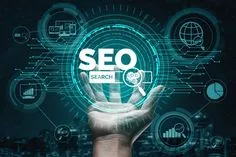
Image By Pinterest
2. Search Engine Marketing (SEM):
Search Engine Marketing (SEM) is an integral part of digital marketing. It focuses on increasing a website’s visibility in search engine results pages (SERPs) through paid advertising. Unlike Search Engine Optimization (SEO), which improves organic search results, SEM allows for immediate visibility on search engines like Google or Bing. This form of marketing is handy for targeting specific demographics or interests, making reaching a precisely defined audience possible. SEM is highly effective for businesses looking to increase their online presence quickly and efficiently, as it positions their website in front of potential customers actively searching for related products or services.
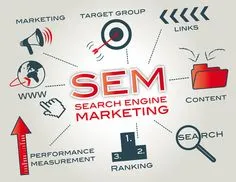
Image By Pinterest
3. Social Media in Marketing:
Social media marketing involves using social media platforms to connect with your target audience to build your brand, increase sales, and drive website traffic. This practice includes publishing great content on your social media profiles, listening to and engaging your followers, analysing your results, and running social media advertisements. The major social media platforms (at the moment) are Facebook, Instagram, Twitter, LinkedIn, Pinterest, YouTube, and Snapchat. A range of social media management tools also help businesses get the most out of the platforms listed above. For example, Buffer is a platform of social media management tools that can help you achieve success with your social media marketing. Whether you want to build a brand or grow your business, we want to help you succeed.
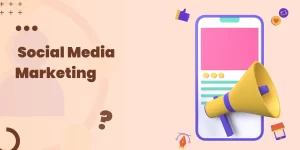
4. Content Marketing:
Content marketing is a strategic approach focused on creating and distributing valuable, relevant, consistent content to attract and retain a clearly defined audience. The essence of this strategy lies in the belief that delivering high-quality, helpful content to potential and existing customers drives profitable customer action. Unlike traditional marketing, which often interrupts the audience with direct sales pitches, content marketing attracts customers by offering them the information and solutions they seek. It encompasses various formats like articles, videos, podcasts, and infographics, catering to the diverse preferences of a broad audience.
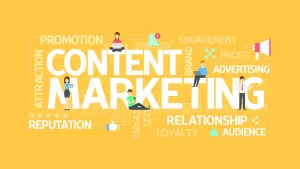
Image By Pinterest
5. Chatbots:
Chatbots are sophisticated AI-driven programs designed to simulate human conversation and interact with users in a natural, conversational manner. These digital assistants can be integrated into various platforms, including messaging apps, websites, and mobile applications, providing a seamless and interactive user experience. The primary goal of chatbots is to provide quick, automated responses to user questions, reducing the need for human intervention and streamlining various processes.
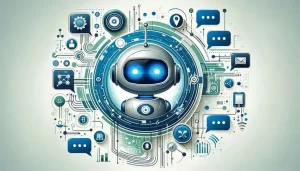
Image By Pinterest
6. Email Marketing:
Email marketing is a powerful digital communication tool businesses use to send emails to a group of people to promote products and services or share news and updates. As a form of direct marketing, it stands out due to its ability to deliver personalized messages directly to the inboxes of a target audience. With advanced segmentation and automation technologies, email marketing can be highly targeted, ensuring the right message reaches the right person at the right time. It encompasses various types of emails, such as newsletters, transactional emails, and promotional campaigns, each serving a different purpose in the marketing strategy.
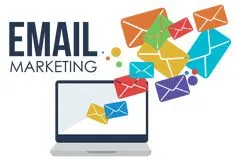
Image By Pinterest
7. Influencer Marketing:
Influencer marketing is a modern marketing strategy involving collaborating with individuals with a significant following and influence on social media platforms. These influencers, often viewed as experts or trendsetters in their respective niches, can affect the purchasing decisions of their followers due to their authority, knowledge, position, or relationship with their audience. This form of marketing capitalizes on the credibility and reach of these influencers to promote products, services, or brands. Influencers can range from high-profile celebrities to micro-influencers with smaller but highly engaged audiences.
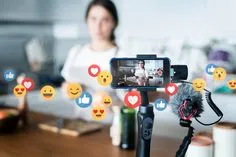
Image By Pinterest
What are the four main types of digital marketing?
Digital marketing uses digital channels to promote or market products and services to consumers and businesses. It’s pivotal in today’s internet-centric world, offering new avenues for companies to engage with customers. The four main types of digital marketing are Search Engine Optimization (SEO), Pay-Per-Click (PPC) Advertising, SMM, and Content Marketing. Each type serves a unique purpose in an overall digital strategy, from increasing visibility online (SEO and PPC) to engaging with customers on social media and providing valuable content.
What are the 7 C’s of digital marketing?
1. Content: Creating high-quality, relevant content that resonates with the audience.
2. Context: Understanding the context in which your audience consumes content.
3. Community: Building and nurturing online communities around your brand.
4. Customization: Tailoring your marketing messages to meet the specific needs of your target audience.
5. Communication: Engaging in two-way conversations with customers.
6. Commerce: Integrating e-commerce functionalities for a seamless customer journey.
7. Customer Service: Providing excellent service enhances customer satisfaction and loyalty.
The benefits of digital marketing-
1. With Online marketing, you can create just one content piece that draws visitors to your blog as long as it’s active. You can create an email marketing campaign that delivers messages to targeted customer lists on a schedule, and it’s easy to change that schedule or the content if you need to.
2. With digital marketing, results monitoring is simple. Online marketing software and platforms automatically track the number of desired conversions you get, whether email open rates, visits to your home page, or direct purchases.
3. With Online marketing, they can click a link or save a blog post and move along the sales funnel right away. Although they might not make a purchase immediately, they will stay connected with you and give you a chance to interact with them further.
DIGITAL MARKETING IN NUTSHELL:
Digital Marketing is across electronic platforms like computers, smartphones, tablets, etc. The core principle behind the industry is the same: to promote a product or service.
·Digital marketing uses online channels to promote a product or service.
·Using digital marketing techniques and strategies helps businesses reach their target audience, engage with them, and ultimately convert them into customers.
·Examples of digital marketing include SEO, PPC, SMM, content marketing, and leveraging traditional offline media for advertising.
·Offline marketing includes out-of-home advertising, TV, and radio marketing.
·Combining online and offline marketing is vital to any well-rounded strategy.

